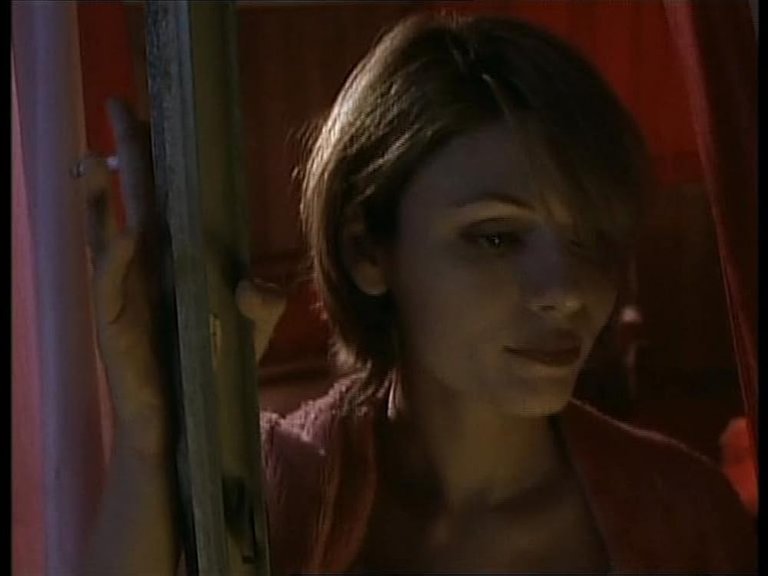Television Review: Full Moon (Homicide: Life on the Street, S4X17, 1996)

Full Moon (S04E17)
Airdate: 5 April 1996
Written by: Eric Overmyer
Directed by: Kathy Bates
Running Time: 47 minutes
Season 4 of Homicide: Life on the Street remains a benchmark for television storytelling, distinguished not only by its razor-sharp writing but also by its ability to deliver episodes that feel both familiar and radically distinct. Among its standout entries is Full Moon, an episode that stands apart for its claustrophobic setting, sharp social commentary, and the involvement of notable collaborators like director Kathy Bates and writer Eric Overmyer. Unlike the sprawling ensemble-driven narratives typical of the series, Full Moon narrows its focus to two detectives, crafting a taut, character-driven exploration of crime, guilt, and societal decay.
The episode was directed by Kathy Bates, a renowned Oscar-winning actress. Transitioning to directing, Bates brings a visceral, detail-oriented approach to the project. Her lens lingers on the grime of the New Moon Motel, its flickering neon lights, and the desperation of its inhabitants, evoking a film noir aesthetic. Bates’s background in acting ensures her understanding of character dynamics, allowing her to frame close-ups and tense interactions with psychological acuity. Though this was her sole directorial contribution to the series, the episode showcases her ability to balance visual flair with the show’s gritty realism.
Writer Eric Overmyer, who would later collaborate with David Simon on The Wire and Treme, infuses the episode with his signature blend of procedural grit and humanistic storytelling. His script for Full Moon is a microcosm of his later work: a tightly wound narrative that pivots on interpersonal dynamics while critiquing systemic societal failures. The episode’s focus on two detectives—Mike Kellerman (Reed Diamond) and Meldrick Lewis (Clark Johnson)—reflects Overmyer’s talent for deepening character arcs through constrained settings, a hallmark of his later HBO collaborations.
Like Stakeout, originally aired few weeks earlier, Full Moon is a “bottle episode,” confined to a single location—the New Moon Motel. However, whereas Stakeout showcased the entire Homicide Unit, this episode isolates Kellerman and Lewis, allowing their personalities to clash and complement each other. This narrow focus heightens tension, transforming the motel into a stage for human foibles. The result is a contained narrative that feels both intimate and expansive, as the detectives’ interactions with the motel’s transient population reveal broader societal rot.
The New Moon Motel, a dingy outpost on Baltimore’s outskirts, is a character in its own right. Its transient guests—a mosaic of ex-convicts, prostitutes, addicts, and illegal immigrants—reflect the fringes of society. The episode’s inciting incident—a murder of ex-convict Charlie Wells, found dead with a missing boot and motorcycle—serves as a catalyst for the detectives’ inquiries. Yet the case remains unresolved, prioritising character exploration over procedural payoff. Along the way, Savage and Lewis unravel a secondary killing (an eccentric motel owner, played by Nasser Farris, admits killing violent robber in self-defence) and encounter figures like the guilt-ridden Native American man (M. Cochise Anderson) and a struggling family with violent, unemployed father.
The episode’s unflinching realism is on full display. Each character embodies a pathway to ruin: the unemployed father’s domestic violence, the Native American’s guilt over a traffic fatality, and the criminals’ futile attempts to evade the law. The motel becomes a Petri dish for societal neglect, where systemic failures manifest in personal tragedies. Overmyer’s script avoids moralising, instead presenting these characters with empathy and complexity.
A poignant subplot involves an illegal immigrant family, whose plight Lewis (as a Black man) approaches with compassion, while Kellerman’s dialogue betrays subtle anti-immigrant bias. This dynamic underscores the series’ exploration of institutional and personal prejudices. Lewis’s background—hinted at through a scene of the Lafayette Courts housing project, where he once lived, being demolished—anchors his empathy, while Kellerman’s hardened exterior masks a latent judgmental streak. The scene is a masterclass in subtle social commentary, avoiding didacticism to let the characters’ interactions speak for themselves.
The episode’s most memorable flourish is Timothi Jane-Graham’s performance as Ramona Rostenkowski, a prostitute who swims nude in the motel pool. Though her scenes adhere to 1990s broadcast standards (her nudity is implied rather than explicit), the titillation is palpable. Ramona’s flirtation with Kellerman—used strategically to extract information—adds a layer of campy charm. However, the character risks feeling exploitative. Yet her role also serves a narrative purpose, highlighting the motel’s seediness and Kellerman’s capacity for manipulation.
Musician Reverend Horton Heat appears as a half-crazed preacher, his role limited to silent, surreal cameos. His presence—staring vacantly—adds a dash of eccentricity, but his lack of dialogue feels like an oversight. Likely constrained by runtime, his inclusion feels more stylistic than narrative-driven, a quirky flourish that adds texture without advancing the plot.
The episode intercuts footage of the 1995 demolition of Baltimore’s Lafayette Courts, a public housing complex. Lewis references this destruction as his former home, subtly enriching his character’s backstory. The imagery underscores the city’s evolving (and often violent) landscape, tying personal history to urban decay. This visual motif elevates the episode beyond its confined setting, linking individual stories to broader societal shifts.
Full Moon is a testament to Homicide’s ability to blend procedural rigor with humanistic storytelling. Bates’s direction and Overmyer’s writing create a taut, atmospheric narrative that thrives on character depth and social critique. While its exploitative moments and unresolved plot threads may frustrate purists, the episode’s focus on flawed individuals navigating a broken system remains its greatest strength. Like the New Moon Motel itself, Full Moon is a temporary refuge for characters on the edge, their stories illuminated briefly before fading into the shadows. For fans of the series, it is a reminder that even in the darkest corners of society, humanity persists—in all its messy, contradictory glory.
RATING: 8/10 (+++)
Blog in Croatian https://draxblog.com
Blog in English https://draxreview.wordpress.com/
InLeo blog https://inleo.io/@drax.leo
Hiveonboard: https://hiveonboard.com?ref=drax
Rising Star game: https://www.risingstargame.com?referrer=drax
1Inch: https://1inch.exchange/#/r/0x83823d8CCB74F828148258BB4457642124b1328e
BTC donations: 1EWxiMiP6iiG9rger3NuUSd6HByaxQWafG
ETH donations: 0xB305F144323b99e6f8b1d66f5D7DE78B498C32A7
BCH donations: qpvxw0jax79lhmvlgcldkzpqanf03r9cjv8y6gtmk9
Posted Using INLEO